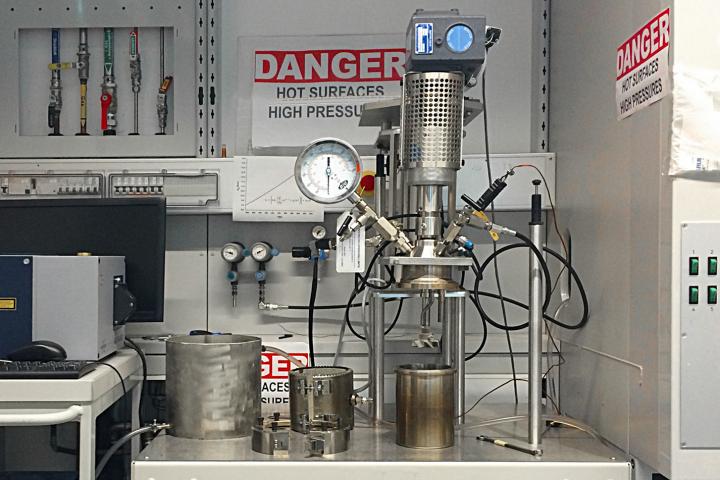Although organic plastics are not harmful to the environment themselves, toxic substances are often used during their synthesis. TU Wien shows – there is another way.

Credit: TU Wien
Many materials that we use every day are not sustainable. Some are harmful to plants or animals, others contain rare elements that will not always be as readily available as they are today. A great hope for the future is to achieve different material properties by using novel organic molecules. Organic high-performance materials containing only common elements such as carbon, hydrogen or oxygen could solve our resource problem – but their preparation is usually anything but environmentally friendly. Often very toxic substances are used during the synthesis of such materials, even if the end product itself is non-toxic.
At TU Wien a different approach is taken: In the research group for organic high-performance materials, led by Prof. Miriam Unterlass at the Faculty of Technical Chemistry at TU Wien, a completely different synthetic method is employed. Instead of toxic additives, only hot water is used. A decisive breakthrough has now been achieved: two important classes of polymers could be generated using the new process – an important step towards industrial application of the new method. The results have now been published in the renowned journal Angewandte Chemie.
High pressure and high temperature
“We are investigating so-called hydrothermal synthetic processes,” says Miriam Unterlass. “We are working at high pressure and high temperature in the order of 17 bar and 200 °C. As it turns out, under such extreme conditions it is possible to avoid using toxic solvents that would otherwise be necessary for producing these polymers. The term “green chemistry” refers to those methods that allow to render not only the end products but also the synthetic processes in the chemical industry more environmentally friendly.
Already several years ago, Miriam Unterlass achieved first positive results with this technology. “We succeeded, for example, in producing organic dyes, or polyimides – plastics that are indispensable in the aviation and electronics industries. This also generated a great deal of interest from the industry,” says Unterlass. “But now we have taken an important step forward: We were able to synthesize different polymer examples from two highly interesting classes of plastics – polybenzimidazoles and pyrron polymers.”
New preparation processes for super-plastics
Polybenzimidazoles are, for example, nowadays used as membranes in fuel cells since they are acid-resistant even at high temperatures and can also conduct protons. Polybenzimidazole fibers are also found in fireproof clothing such as the protective suits of firefighters. ” That already shows that they are real super-plastics,” says Unterlass.
Pyrron polymers, on the other hand, have particularly interesting electronic properties in addition to their excellent stability. Therefore, they are suitable for applications such as field-effect transistors or as powerful and highly resistant electrode material in batteries.
“The fact that these polymers can be prepared using our hydrothermal process is remarkable since under usual conditions the chemical reactions for generating these plastics are sensitive to water”, says Miriam Unterlass. “This shows how promising our method is for a wide range of applications.”
The new fabrication method for the two new material classes has already been patented, with the assistance of the research and transfer support of the TU Wien. The electrochemical analysis of the products was carried out in cooperation with Imperial College London.
###
Contact
Prof. Miriam Unterlass
Institute of Applied Synthetic Chemistry / Institute of Materials Chemistry
Technische Universität Wien
T +43-1-58801-165206
[email protected]
Media Contact
Florian Aigner
[email protected]
Original Source
https:/
Related Journal Article
http://dx.




